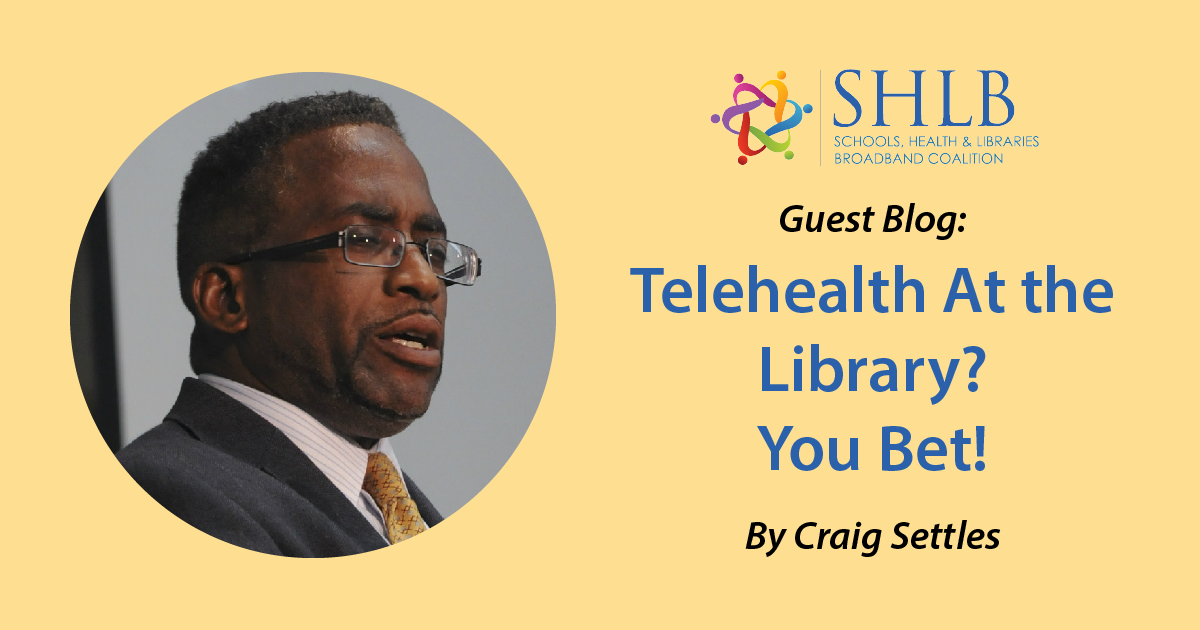Telehealth At the Library? You Bet! July 22, 2021
Telehealth At the Library? You Bet!
By Craig Settles, guest author
Libraries today may be on the brink of a great mobilization to narrow the digital divide. The needs are there, and money is certainly available. Five years ago, Larra Clark, deputy director of the Office for Information Technology Policy at the American Library Association (ALA) felt that many fail to imagine what libraries could truly be.
Clark says, “When it comes to community broadband networks that have been built, we could have improved the impact of some of these investments if we had utilized the existing network of libraries. Libraries have a sense of place, a highly qualified staff, and a good technology infrastructure. Libraries can be mobilized in really powerful ways for this country.”
Can libraries today be given funding and the license to transform healthcare?
Certain types of medical conditions would be more conducive to telehealth in a library setting than others, such as dermatology and eye exams.
“Things that require information exchange only are perfect for a library experience as well as telehealth that is visual,” states Dr. William Payne, of Franciscan Health and Specialty Physicians of Illinois.
Sessions that are conversational, such as talking to a counselor, a health coach, or a psychologist, could be easily handled in a library.
“And depending on how sophisticated a library wants to be and who they partner with, diagnostic tools could be available to monitor certain conditions such as hypertension,” adds Payne.
Telehealth is more than you think
If given creative reign with telehealth, great things can come from even the smallest of libraries. More than just video meets with doctors, envision 1) real-time telehealth; 2) store-and-forward telehealth; and 3) “passive” telehealth.
Real-time telehealth are activities happening “right here and now,” often involving medical or healthcare professionals. In a library setting, a patron is video chatting with a doctor from study rooms and telehealth kiosks. Or a traveling nurse sets up in a room to do hypertension screening with patrons and video conferencing with a doctor in another location if patrons have questions.
Store-and-forward telehealth is collecting medical data and sending it electronically to another site for later evaluation. Patrons who don’t want to go over their smartphones’ data cap might use a library’s Wi-Fi to send medical records, MRI digital images, or photos of surgical wounds. For maximum privacy and security, telehealth applications receive and send using HIPAA-compliant software.
“Passive” telehealth refers to educational web content, digital knowledgebases, and software applications that help us understand, prevent, treat, or recover from threats to our physical and mental health. Few entities are as competent as libraries at making knowledge easy to find, sort through, and act upon.
Pottsboro Public Library in North Texas discovered innovation was the way to make her library stand out and win grant after grant, including the funds that fueled the first telehealth center in a Texas library. “We've figured out innovative projects bring us attention and interest,” says Dianne Connery, director for the library. “The more innovative our proposals are, we're more likely to get funding.”
Grant money funded a community garden because Pottsboro is a “health desert.” The library got cargo bicycles that enable people to reach the nearest grocery store and bring home food. They also started 100 individual garden beds so homes can grow their own organic produce and fruits. The library’s telehealth center opened in January of this year.
Craig Settles, saved from a stroke by telehealth, pays it forward by uniting community broadband teams and healthcare stakeholders through telehealth initiatives.
Pottsboro and various other public libraries are highlighted in the guide, “Shhhhhh! The Doctor Is In.”


